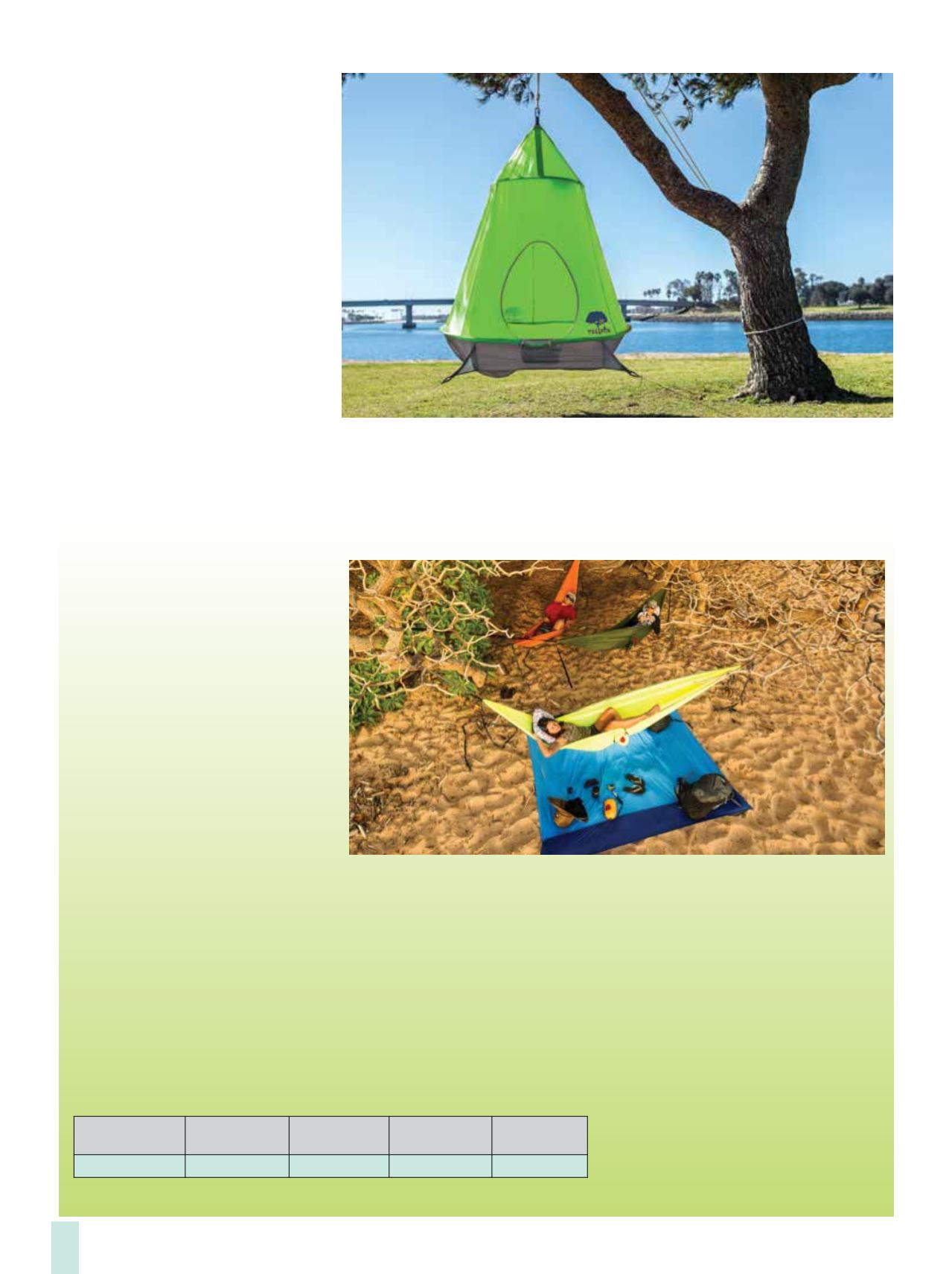

urbanites. Much like we see with
events campers, these urbanized
outdoor experiences generally can
be categorized into two groups. On
one end, it’s simply about affordable
accommodations (albeit often illegal)
when visiting a city or spending a
night away from home. On the other
side, it’s about the social experience
– a chance to disconnect from
devices, soak in some scenery
under the stars and gather
with likeminded souls around a
conceptual campfire, all without the
time and effort required to travel to
more remote locations.
In both cases, the movement
provides camping with a cool factor
that it hasn’t enjoyed in some time, and
likely introduces the activity to lots of
members of a desirable demographic.
Part tent, part hammock, part tree house, the TreePod from Canaima hangs just
about anywhere, from the backyard to the backcountry. A customized stand to hang
the pod also is available.
Some may find it peculiar to see a story
on the growth of camping product sales that
doesn’t directly address the surging sales
of hammocks and the subsequent rise of
“hammocking.” It’s certainly a story worth
mentioning, considering hammock sales at
outdoor retail, as tracked by The NPD Group,
more than doubled the past two years, going
from $25.9 million in 2013 to a whopping
$53 million last year. Even so, we can’t be
sure how much of the recent growth falls
under sales specific to camping demand.
Certainly, the number of hammock
campers has grown, and hammocks and
hammock systems have become a widely
accepted option for sleeping under the
stars. At the same time, the explosion in
hammocks doesn’t seem to be taking any
bite out of traditional sleeping arrangements,
as tents and sleeping pad/mattresses
likewise have experienced substantial sales
increases during the past two years. Dollar
volumes of three-season backpacking tents,
for instance, were up 20 percent and 13
percent annually the past two years, while
four-season tent sales jumped 7 percent and
10 percent in 2014 and 2015, respectively.
Even bivy sales were up 27 percent year over
year in 2015. The sleeping pad/mattress
category experienced similar growth.
And while it’s relatively common to
see both tents and a hammock set up at
one camp site, we’d argue that the wider
hammocking trend – defined as folks
hanging in their hammocks on college
campuses, in city parks and at other
scenic locales – is driving large chunks
of hammock sales growth, and that form
of hammocking is more aligned with
picnicking or an afternoon at a swimming
hole than it is to overnight camping.
That’s no slight to hammock sales
and hammocking. Outdoor dealers would
be less-than-thorough to ignore a $50
million market that requires relatively little
floor expertise. But whereas we can safely
assume most one-burner stoves, campfire
grills, lanterns or tents are being used
specifically at overnight campsites, we
can’t be so sure with the current hammock
demand. A similar case could be made for
the high-end coolers that are flying out of
outdoor stores lately. We simply just don’t
have the data to declare anything yet.
Where to Hang Hammocks
Outdoor Retail Hammock Dollar Volumes
2013
2014
2015
% Change
’13 to ’14
% Change
’14 to ’15
$25,897,868
$39,447,726
$53,084,788
52.3
34.6
Source: The NPD Group retail tracking reports
Photo by Jeff Brockmeyer, courtesy Grand Trunk
Inside
Outdoor
|
Spring
2016
34
















